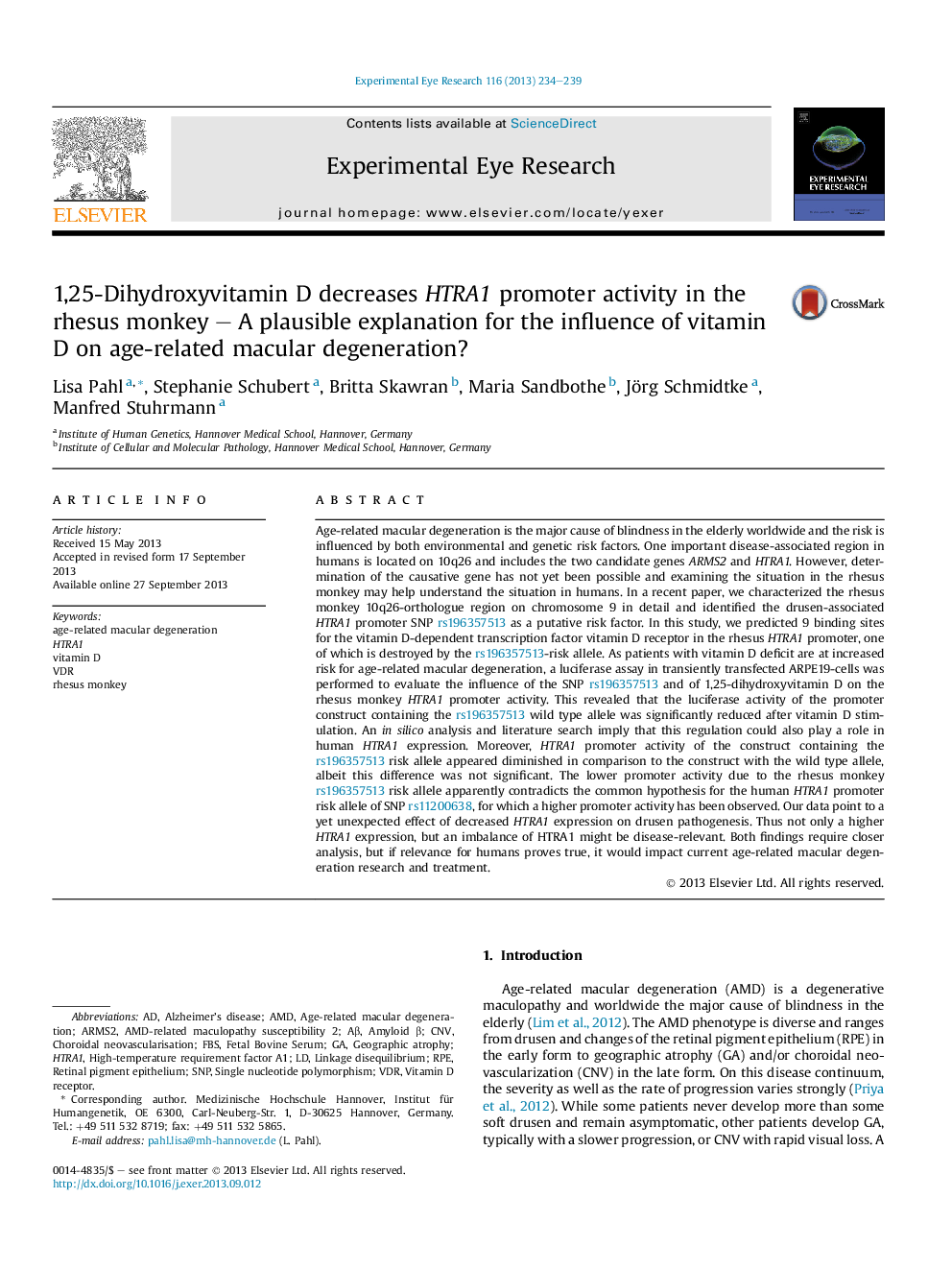| کد مقاله | کد نشریه | سال انتشار | مقاله انگلیسی | نسخه تمام متن |
|---|---|---|---|---|
| 6197209 | 1602606 | 2013 | 6 صفحه PDF | دانلود رایگان |

- Binding sites for VDR are predicted in the rhesus HTRA1 promoter.
- One VDR-site lies on rs196357513 and is destroyed by the drusen-associated risk allele.
- Vitamin D lowers HTRA1 promoter activity only for the wild type construct.
- The risk allele decreases HTRA1 promoter activity compared to the wild type allele.
Age-related macular degeneration is the major cause of blindness in the elderly worldwide and the risk is influenced by both environmental and genetic risk factors. One important disease-associated region in humans is located on 10q26 and includes the two candidate genes ARMS2 and HTRA1. However, determination of the causative gene has not yet been possible and examining the situation in the rhesus monkey may help understand the situation in humans. In a recent paper, we characterized the rhesus monkey 10q26-orthologue region on chromosome 9 in detail and identified the drusen-associated HTRA1 promoter SNP rs196357513 as a putative risk factor. In this study, we predicted 9 binding sites for the vitamin D-dependent transcription factor vitamin D receptor in the rhesus HTRA1 promoter, one of which is destroyed by the rs196357513-risk allele. As patients with vitamin D deficit are at increased risk for age-related macular degeneration, a luciferase assay in transiently transfected ARPE19-cells was performed to evaluate the influence of the SNP rs196357513 and of 1,25-dihydroxyvitamin D on the rhesus monkey HTRA1 promoter activity. This revealed that the luciferase activity of the promoter construct containing the rs196357513 wild type allele was significantly reduced after vitamin D stimulation. An in silico analysis and literature search imply that this regulation could also play a role in human HTRA1 expression. Moreover, HTRA1 promoter activity of the construct containing the rs196357513 risk allele appeared diminished in comparison to the construct with the wild type allele, albeit this difference was not significant. The lower promoter activity due to the rhesus monkey rs196357513 risk allele apparently contradicts the common hypothesis for the human HTRA1 promoter risk allele of SNP rs11200638, for which a higher promoter activity has been observed. Our data point to a yet unexpected effect of decreased HTRA1 expression on drusen pathogenesis. Thus not only a higher HTRA1 expression, but an imbalance of HTRA1 might be disease-relevant. Both findings require closer analysis, but if relevance for humans proves true, it would impact current age-related macular degeneration research and treatment.
Journal: Experimental Eye Research - Volume 116, November 2013, Pages 234-239